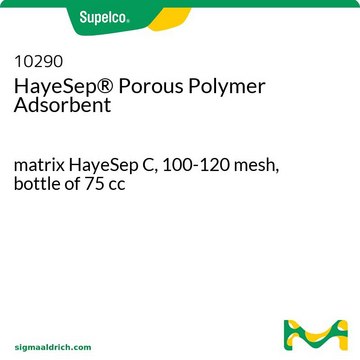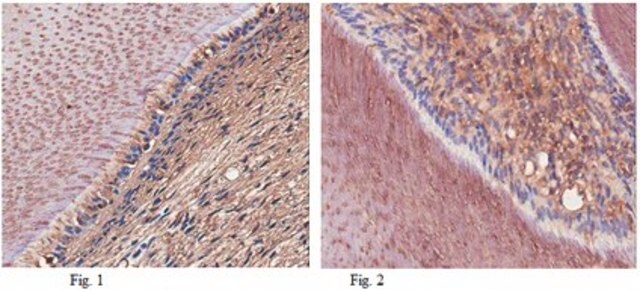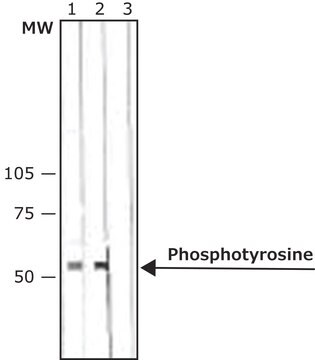16-204
Anti-Phosphotyrosine Antibody, recombinant clone 4G10®, biotin conjugate
clone 4G10®, Upstate®, from mouse
About This Item
Recommended Products
biological source
mouse
Quality Level
conjugate
biotin conjugate
antibody form
purified antibody
antibody product type
primary antibodies
clone
4G10®, monoclonal
species reactivity (predicted by homology)
all
manufacturer/tradename
Upstate®
technique(s)
western blot: suitable
isotype
IgG2bκ
shipped in
wet ice
target post-translational modification
unmodified
Gene Information
human ... PID1(55022)
General description
Product Description: Produced from CHO cells expressing the 4G10 antibody heavy and light chain cDNAs. Heavy chain C-terminus has a hexa-histidine tag for purification and immobilization via nickel affinity matrices. Cross-linked to biotin. Patent pending.
Specificity
Immunogen
Application
Signaling
General Post-translation Modification
Quality
Western Blot Analysis:
0.5-2 μg/mL of this lot detected tyrosine phosphorylated proteins in a RIPA lysate of EGF-stimulated A431 carcinoma cells.
Target description
Physical form
Storage and Stability
For maximum recovery of product, centrifuge the vial prior to removing the cap. DO NOT FREEZE!
Analysis Note
Positive Antigen Control: Catalog #12-302, EGF-stimulated A431 cell lysate. Add 2.5µL of 2-mercaptoethanol/100µL of lysate and boil for 5 minutes to reduce the preparation. Load 20µg of reduced lysate per lane for minigels.
Other Notes
Legal Information
Disclaimer
Not finding the right product?
Try our Product Selector Tool.
Storage Class Code
10 - Combustible liquids
WGK
WGK 2
Regulatory Listings
Regulatory Listings are mainly provided for chemical products. Only limited information can be provided here for non-chemical products. No entry means none of the components are listed. It is the user’s obligation to ensure the safe and legal use of the product.
JAN Code
16-204:
Certificates of Analysis (COA)
Search for Certificates of Analysis (COA) by entering the products Lot/Batch Number. Lot and Batch Numbers can be found on a product’s label following the words ‘Lot’ or ‘Batch’.
Already Own This Product?
Find documentation for the products that you have recently purchased in the Document Library.
Our team of scientists has experience in all areas of research including Life Science, Material Science, Chemical Synthesis, Chromatography, Analytical and many others.
Contact Technical Service








